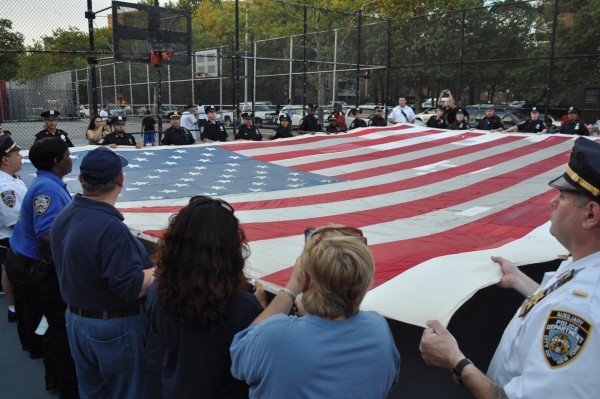
Violence interrupters, part of the mayor and City Council’s Gun Violence Crisis Management System, will also work to improve police-community relationships. File Photo
When Mayor Bill de Blasio announced earlier this month the expansion of the Gun Violence Crisis Management System to 14 precincts across the city—including four in Queens—he noted that, as an integral part of the $12.7 million program, individuals known as “violence interrupters” would be descending on the high-risk communities targeted by the joint de Blasio administration-City Council effort.
“This [expansion] relies on the notion of violence interruption,” de Blasio said. “You may have heard of this around the country—the Interrupters—in many cases, folks who have had a history of involvement with gangs and overcame that part of their lives and went on to be peacemakers; or other community leaders and activists who believe in healing and bringing people together. This approach, all around the country, has been proven as an effective tool—and you’ll hear from police leaders around the country that this, to them, is an exciting piece of what we can do to stop violence in coordination with a host of other strategies. The violence interrupters are a community-based solution—community members talking to other community members and convincing them that violence is not the right path.”
Queens District Attorney Richard Brown pointed out that, “while prosecuting gun violence cases has been a longstanding priority of my office, reducing gun violence before it occurs is equally important.”
A spokeswoman for the mayor said violence interrupters are working in south Jamaica in the 103rd Precinct, and are also on their way to Far Rockaway’s 101st Precinct, Queensbridge’s 114th Precinct and Jamaica’s 113th Precinct.
“The violence interrupters and outreach workers are paid staff. They are—because of their street credibility—they do not get caseloads assigned to them,” explained Ife Charles of the Center for Court Innovation during the mayor’s press conference. “They run a caseload anywhere from 10 to 15. The outreach workers, based upon the relations with the violence interrupters—remember the violence interrupters are the firefighters, they put out the fire. They go to the situation and because they live in the community, most of our violence interrupters are from those particular catchment areas. They then—once they put that fire out or put that fight out—they identify the young man or young woman who is most likely the leader within that particular group and refer them to the outreach workers.”
And while she could not say how many interrupters will be employed as the new programs get up and running, the de Blasio spokeswoman said there were typically 10 people per program.
“There’s no one who can convince particularly some of our young people of the consequences of their actions more than someone who went down the wrong path and then recovered from it,” de Blasio added. “I met some of the former gang members, and they’re now people who work for peace every day, and their voices are powerful as they speak from real experience. And they know how to help us find young people at risk and defuse situations before they get out of control.”
By Michael Cusenza
